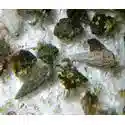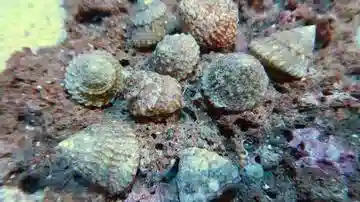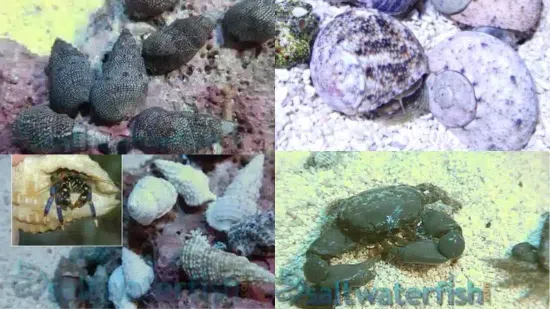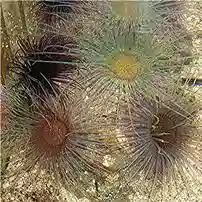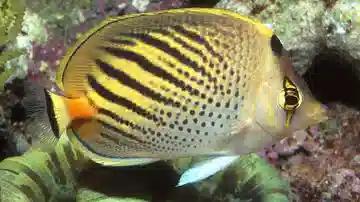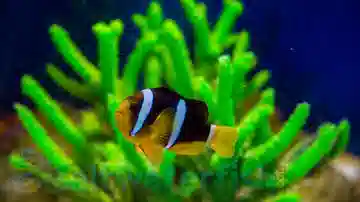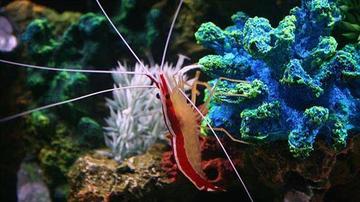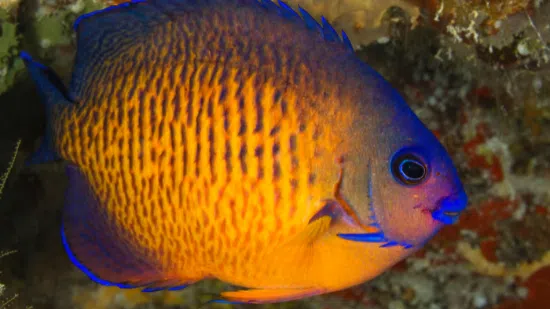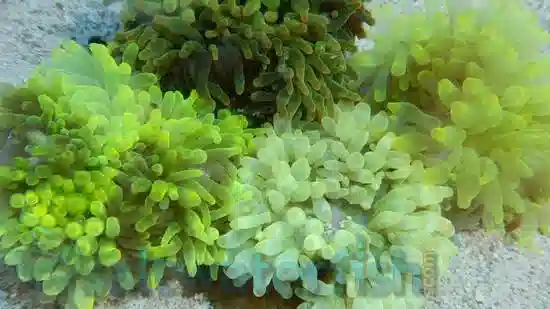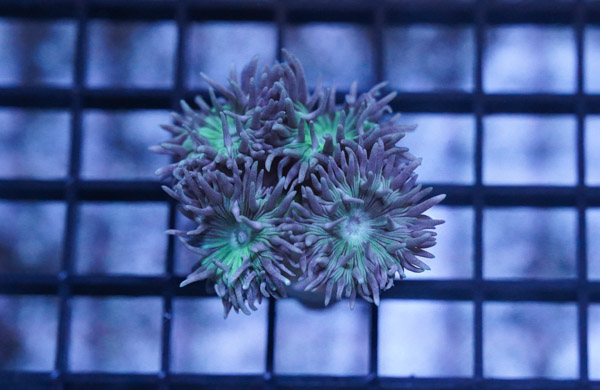The Dwarf White Leg Hermit Crab is a very popular Hermit Crab that is very active in the home aquarium. In the wild, these crabs live together in the hundreds clinging to rocks and each other, then search for food during low tides. They should be offered algae sheets on an every other day basis in order to help feed them. Most of their day is spent as scavengers and they do a tremendous job keeping aquariums clean of detritus and waste build-up. They are voracious <font color="red"><b>algae eaters</b></font>.Crabs belong to the Class Crustacea and Order Decapoda. Hermits and Porcelain Crabs belong to the Section Anomura, which consists of long antennae and three pair of walking legs. The head of the Crab is connected to the thorax and covered by a shell called carapace. They have a smaller abdomen and tail compared to Shrimp and they keep this tucked beneath the carapace. The first pair of their legs are usually developed claws which they use to gather food, use as protection, and to move objects. In order for Crabs to grow they need to shed their exoskeleton, a process called "molting", which allows them to remove their restricting shell and begin a new one. Often times in the home aquarium Crabs will leave this translucent shell in full view so it can serve as a distraction while the Crab finds a hiding place and allows its new shell to harden. Hermit Crabs use abandoned shells as their home. These Crabs usually have extended abdomens that they wrap around the inside of the spiraling shell leaving only their head and claws exposed. When approached these Crabs can recoil into the shell for protection. When a Hermit Crab grows it will often seek out a new larger shell.
The Blue Leg Hermit Crab, Clibanarius tricolor, features characteristic blue legs poking out of their shell. They are excellent scavengers and tank-cleaners that can help control algae and detritus and aerate sandy substrate. They are best housed in tanks with plenty of live rock and a sandy substrate. The Blue Leg Hermit Crab is reef safe, peaceful, and requires no care making it a risk-free and only beneficial addition to any home aquarium.
The Lettuce Nudibranch, Tridachia crispata, also known as the Lettuce Sea Slug, is a well-equipped algae eater that gets energy from the photosynthetic algae it consumes. They will even take the chlorophyll from the algae and incorporate it into its own tissue. Its body is green and wavy very closely resembling a leaf of lettuce.
They are best housed in tanks with plenty of live rock and away from aggressive species. The Lettuce Nudibranch will rid your tank of unwanted algae while being a fascinating organism to watch. Unlike some other sea slugs, the Lettuce Nudibranch is not aggressive and not poisonous making it a risk-free addition to any tank.
The Turbo Snail,
Astrea tecta, also known as the Astrea Snail, features a pale shell sometimes with striping. It is peaceful but shouldn't be housed with predatory fish or crabs that may attack it. The Turbo Snail prefers tanks with plenty of live rock to hide and forage for algae. They can be incredibly beneficial tank members for their penchant for algae-eating. It is reef safe and won't nip corals or other inverts. Like most snails, the Turbo requires minimal care and is an excellent choice for any home aquarium. They are the most popular snail species in the entire aquarium trade. The Cleaner Shrimp are larger shrimps and can be easily identified by the single white stripe down the back from head to tail, and flanked by two red stripes that terminate at its posterior region. the remaining body is orange in color with two white dots at the top edge, along with six white antennae. The Cleaner Shrimp, as the name suggests, is mainly known for its cleaning property, as it can clean parasites from fish and eels, and even the mouth of a large Grouper. The Cleaner Shrimp sheds its exoskeleton and undergo molting process. It does become very vulnerable and needs iodine supplement periodically which encourages them to shed their exoskeleton. They are very peaceful and can be kept with their own species and they don?t harm other inhabitants. The Cleaner Shrimp belongs to the class Crustacea and order Decapoda, which is characterized by two pair of antennae, three body parts, and five pairs of legs. The Cleaner Shrimp features long stiff antennae through which it feeds, catches, and tears apart with their pincers. It has extended eyes and highly developed abdomen which allows for quick movement.
You will receive either a Serpent Starfish, a Brittle Starfish, or a Sand Sifting Starfish depending on availability of those items.
The Red Leg Hermit Crab, Paguristes sp., are found off the Mexican coast living together in the hundreds. They will spend their time in the home aquarium clinging to rocks and each other scouring for algae and other food. As proficient tank-cleaners, the Red Leg Hermit Crab is an essential member to any clean up crew and have no real drawback of keeping them in your tank.
The Cleaner Clam, Mercenaria mercenaria, is a durable, beneficial, and functional addition to any tank. They are diligent water-cleansers and algae-eaters. Cleaner clams are essential members of any janitorial crew. They do not require light as they will spend much of their time burrowed under a sandy substrate.
The Nassarius Snail,
Nassarius sp., is an excellent reef scavenger. Their trunk-like tubes extend from curved shells while searching the sand, tank wall, and rock for microfauna prey. Nassarius Snails are capable sand-sifters as they can sometimes burrow in search of food, often detritus. Nassarius Snails require minimal attention and will thrive without any care in established reef tanks with plentiful live rock and algae. Overall, these snails are incredibly beneficial and are often instrumental in keeping tanks clean and operational.
